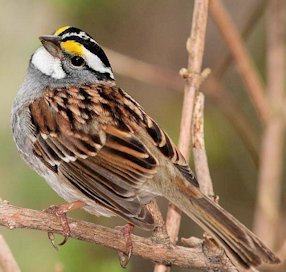
|
Seasonal Changes in Bird Territoriality - Page 1 During the breeding season most birds defend their territories with song and visual display. Watch your feeder as spring approaches. Gradually the social pattern of the birds using will change. Birds that had been feeding in flocks, such as chickadees and White-throated Sparrows begin appearing more and more as pairs or solitary birds. They may burst unexpectedly into song or fly off pell-mell hurriedly dashing after some real or imagined violation of their territorial sovereignty. Just the opposite occurs in late summer. Species that had shown no signs of sociability begin to gather into flocks. In part this is due to newly flying young that move around in small groups. These groups coalesce, adults join them, and they grow into large flocks. By early fall, flocks of blackbirds, grackles, starlings, robins, or swallows may number in the hundreds or thousands, The chickadees once again begin to move in small foraging groups. White-throated Sparrows stop their singing and join small flocks. Flocking in the winter has the advantage of making birds less vulnerable to predators and can also make finding food a little easier; when one flock member finds a good feeding site, the others join in. On to Seasonal Territory Page 2 |
| White-throated Sparrow | |